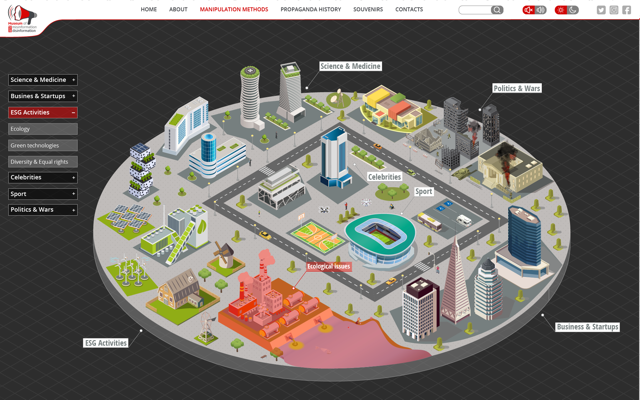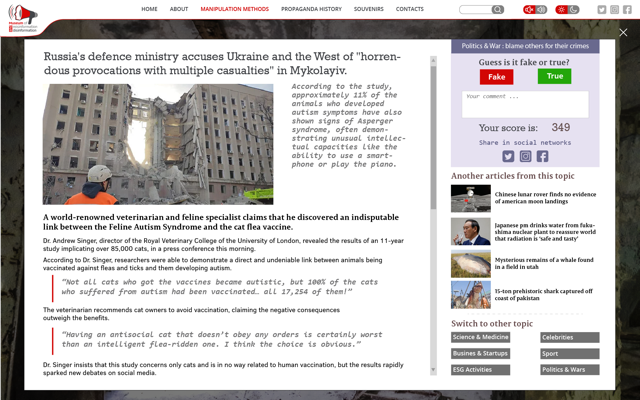Picture yourself walking around your city and magically everything becomes 3-D and you can interact with anything around you.
Assume you have a museum or a stadium close and you click on one of them and an article pops up. You can now interact with it, deciding if it’s fake news or not.
All guided by a soundtrack that is based on your emotions.
«Imagine Sim City, where you see a city from above. With Mumidis we have created different 3D building models you can click on. We represented in each scenario different museum with different specific news category: we have politics building, hospital building, sports stadium etc…».

Samuel Van Ransbeek, composer sound artist and researcher, has been working on the project of building the soundtrack.
No special tools are needed as it’s an online experience you can access from your own computer. You can navigate inside the building where you have a museum lobby where you can select several articles that are either real or fake news.
«The idea is for you to read them and have a say in wherever they are real articles or not».
The final goal is for the user to learn how to recognise fake news.
«Some phrases in the article can be weird or there can be incorrect elements. That is how we guide you».

But the soundtrack he created is what gives the experience that extra gear.
«As I said before, my focus was the soundtrack. Whilst we are educating people, we are tracking their emotions».
What “MUMIDIS” does is track your mouse, and how you move it around on the screen. Through that, they are able to understand how the player feels, based on scientific proof and data. «You can be in a rage, or very happy and energetic. Based on that we choose the right soundtrack for you, from our database».
The project is funded by MediaFutures, a three year European innovation project (supported by the European Union’s Horizon 2020 research and innovation programme) which aims at contributing to high-quality media activities.
MediaFutures establishes a data-driven innovation hub to offer grant funding and support for startups and artists through three Open Calls. We’re looking for pilots, artworks and experiences that use data to encourage citizens to engage more meaningfully with high-quality journalism, science education and digital citizenship.
Privacy is not going to be a problem as Samuel explains it’s their “selling point”.
«We are using a specific technology. Even if we are tracking keyboards and mouses, we don’t use cameras or microphones. We won’t identify any user or their IP».
Samuel explains that the technology they are using to track the movements (only when you are playing the game) is the same already used by e-commerce.
They plan to release the project around January 2023, and it will be free for the users.
«It’s not like MediaFutures develops the game and that’s the end. We are looking at the future» Samuel says, as the business model they’re creating would eventually take the game to another level.
«Imagine a bank that would like to teach their employees or customers about fake news and misinformation around cryptocurrency. We can design a specific building for them and make that happen».
And it doesn’t stop there.
«We are also planning to expand and have museums or festivals to host the experience».
Re-defining information with a process of recontextualising through a game environment is now possible thanks to “MUMIDIS” which built a 3D-modelled city where visitors interact with different thematic spaces.
The aim is to raise awareness and empower individuals to critically evaluate the information they consume by inviting the audience into an environment where fake news is being recontextualized through art and a game-like immersive experience.
“We believe that by engaging the audience in a novel and entertaining manner, the museum of Re-information will support the effort to counteract the negative effects of disinformation and misinformation across society.”

